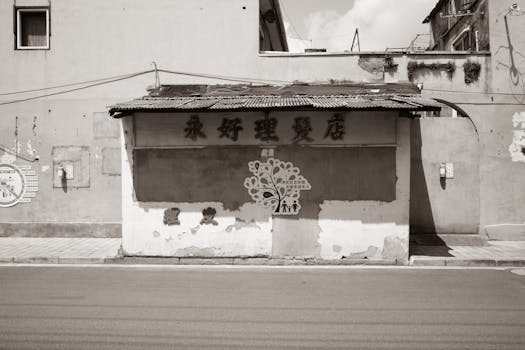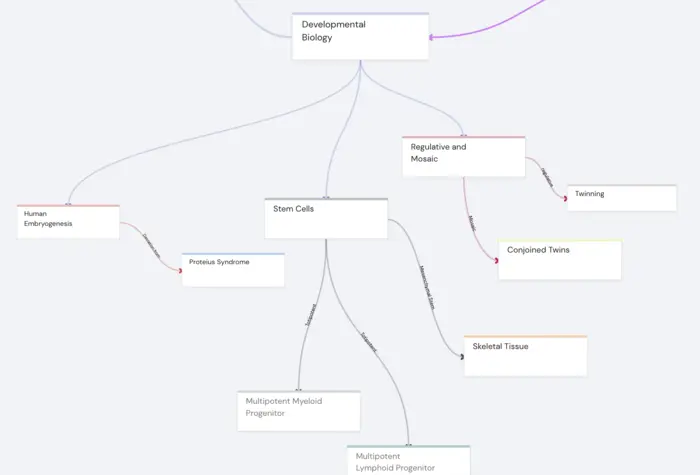Introduction
Welcome to the fascinating world of Chinese dialects! As a language enthusiast, you might be aware that Chinese, the language with the most speakers worldwide, is not a singular language, but rather a family of related yet distinct dialects. This diversity is a part of the richness and depth of Chinese culture. But, what is the story behind these dialects? How different are they from each other? And most importantly, as a lifelong learner keen on mastering Mandarin, how can understanding these dialects enhance your language learning journey?
In this comprehensive guide, we will unravel the tapestry of Chinese dialects, exploring their unique characteristics, historical evolution, and sociolinguistic aspects. We will also delve into how Traverse, with its innovative approach, facilitates learning these dialects and how it partners with Mandarin Blueprint, an online Chinese course, to enhance your Mandarin learning experience.
So, get ready to unlock the diversity of Chinese dialects and enrich your Chinese language learning journey!
The Rich Tapestry of Chinese Dialects
China's linguistic landscape is a vibrant mosaic of dialects, each with its distinctive phonetics, vocabulary, and cultural nuances. These dialects, far from being mere variations of Mandarin, are unique languages in their own right. Let's delve into the diverse world of Chinese dialects and understand their unique characteristics.
Mandarin Chinese: The Lingua Franca of China
Mandarin Chinese, known as Putonghua, is the official language of China and Taiwan, boasting an impressive 1.1 billion speakers. Recognized as the majority language since the late Ming Dynasty, it didn't gain official status until 1909. With four distinct tones (five if you include the neutral tone), Mandarin Chinese is taught and used in all schools, making it a common thread that binds the diverse Chinese populace. Example phrases include "你好" (Nǐ hǎo) — Hello, and "你吃饭了吗?" (Nǐ chīfànle ma?) — Have you eaten yet?
Cantonese Chinese: The Voice of Southern China and Overseas Communities
Cantonese, originating from the ancient city of Guangzhou, is the second most widely spread dialect in China, with approximately 73 million speakers. It is largely spoken in Guangdong province, Guangzhou, Hong Kong, Macau, and by the Tanka people in the Pearl River Delta. Considered a rich dialect due to its wide usage, Cantonese uses six tones, making it a unique linguistic experience.
Wu Chinese: The Melodic Language of Shanghai
The Wu Chinese dialect, prominently known as Shanghainese, is primarily spoken in Shanghai, with around 80 million speakers. However, this dialect is further divided into regional varieties, each with its unique phonetics. The Wu dialect has eight tones, making it distinct from Mandarin, despite sharing similar grammatical patterns.
Hakka Chinese: The Dialect of the Nomads
With approximately 80 million speakers, Hakka Chinese is spoken throughout Taiwan, Hong Kong, Macau, and Southern China. Its history is a story of migration from Northern to Southern China during the Western Jin period. Hakka Chinese, with its six tones, offers a different linguistic experience from Mandarin and most other Chinese dialects.
Gan Chinese: The Language of Jiangxi
With around 60 million speakers, Gan Chinese is spoken in Jiangxi, Hunan, Hubei, Anhui, and Fujian provinces. Gan is phonetically similar to Hakka, leading to their grouping as Gan-Hakka languages.
Hokkien Chinese: The Dialect of Fujian and Taiwan
Originating from Fujian and eastern Guangdong, Hokkien Chinese is a distinct branch that can't be directly derived from Middle Chinese. It has spread to Southeast Asia and Taiwan, and is known as Taiwanese in Taiwan.
Xiang Chinese: The Language of Hunan
Spoken in Hunan and southern Hubei, Xiang Chinese comes in two varieties: New Xiang, influenced by Southwest Mandarin, and Old Xiang, which retains features like voiced initials.
The wide spectrum of Chinese dialects is a testament to the linguistic diversity of the Chinese culture. Recognizing this diversity enriches your journey of learning Mandarin Chinese, enabling you to appreciate the nuances of regional languages and cultures. Now imagine the power of unlocking this diversity with science-backed learning methods, such as those offered by Mandarin Blueprint, which enhances your Chinese character learning and immersion experience.

The Historical Evolution of Chinese Dialects
Unlocking the power of Chinese dialects requires a deep dive into the historical evolution of the Chinese language. From geographical influences and political shifts to cultural interactions, various factors have shaped the rich linguistic landscape of China.
The Role of Geography and Migration
Geography and migration have played a significant role in the formation and development of Chinese dialects. China's diverse landscapes—from towering mountain ranges and vast plains to winding rivers—have fostered the development of distinct linguistic communities. As people migrated across the country, they brought their dialects with them, creating a linguistic mosaic.
Over time, these dialects evolved separately due to geographical isolation, resulting in significant phonetic, lexical, and grammatical differences. For instance, Mandarin Chinese, the most widely spoken dialect, originated in North China, a region marked by its flat terrain, which likely facilitated linguistic uniformity.
The Influence of Political Changes
Political changes have also left a significant imprint on the Chinese language. The establishment of the Qin Dynasty in 221 BC brought about the standardization of the written Chinese language, enabling its spread across the country and beyond. This political shift had a profound impact on the development of the Chinese language, laying the foundation for the dialects spoken today.
The 20th century saw further political influence on the language, as the adoption of simplified characters in Mainland China was driven by the government's effort to increase literacy rates. This political move resulted in the Chinese language we know today—one of the six official languages of the United Nations and spoken by over a billion people worldwide.
The Impact of Cultural Interactions
Cultural interactions have always been a catalyst for language evolution, and Chinese dialects are no exception. Interactions between different ethnic groups within China, as well as contact with foreign cultures, have enriched the Chinese language, introducing new words and expressions into various dialects.
The Cantonese dialect, for instance, has been influenced by British colonial rule in Hong Kong, leading to the incorporation of English loanwords. Similarly, the Hokkien dialect has absorbed Malay and Indonesian elements due to historical trade and migration patterns.
Embracing the diversity and history of Chinese dialects will deepen your appreciation for the Chinese language and culture. Incorporating immersion-based, science-backed learning methods, such as those offered by Mandarin Blueprint, can further enhance your Mandarin learning journey, providing you a well-rounded understanding of this fascinating language.
The Distinctive Features of Chinese Dialects
Delving into the world of Chinese dialects, we encounter a spectacular array of linguistic features, each contributing to the richness and diversity of the Chinese language. These features can be broadly categorized into phonological differences, vocabulary variations, and grammatical divergences.
Phonological Differences: Initials, Finals, and Tones
Phonological differences are among the most striking features that distinguish Chinese dialects. The phonetic structure of Chinese syllables, composed of initials and finals, varies considerably across dialects. For instance, the Mandarin dialect has fewer initials and finals compared to Cantonese or Hokkien.
More significantly, the tonal system, a hallmark of the Chinese language, exhibits considerable variation across dialects. Mandarin Chinese, for instance, employs four tones, whereas Cantonese uses six or even nine tones depending on the region. Understanding these tonal differences is crucial as tones can change the meaning of words in Chinese.
Vocabulary Variations: Unique Words and Expressions
Each Chinese dialect boasts a unique set of words and expressions that reflect the culture and history of its speakers. For instance, Hokkien and Cantonese dialects have preserved many ancient Chinese words that are no longer in use in Mandarin. Moreover, dialects often have distinctive words and phrases for common items or concepts, reflecting regional cultural practices and traditions.
These vocabulary variations make each dialect a fascinating study, offering insights into the unique cultural and historical experiences of different Chinese communities.
Grammatical Divergences: Sentence Structure and Word Order
While the basic sentence structure in Chinese dialects generally follows the subject-verb-object (SVO) pattern, there are subtle differences in word order and sentence structure that set dialects apart. For instance, the placement of time phrases or the use of certain particles can vary across dialects.
Moreover, some dialects feature unique grammatical structures absent in others. For example, the use of aspect markers to indicate the completion or progression of an action can differ among dialects. These grammatical divergences add another layer of complexity to the Chinese language, making each dialect a unique linguistic system to explore.
As you embark on your Mandarin learning journey, appreciating these distinctive features of Chinese dialects can enrich your understanding of the Chinese language and culture. By leveraging science-backed learning methods and resources like Mandarin Blueprint, you can effectively navigate these complexities and experience the joy of discovering the diversity of Chinese dialects.

The Sociolinguistic Aspects of Chinese Dialects
While it's essential to unravel the linguistic characteristics of Chinese dialects, you can't overlook the sociolinguistic aspects that offer profound insights into their use, status, and the language policies governing them in different regions.
Bilingualism and Multilingualism in China
In an evolving linguistic landscape like China, bilingualism and multilingualism are more common than you might think. Mandarin, the official language, coexists with a multitude of local dialects. This coexistence often leads to a phenomenon where locals converse in different dialects, understanding each other perfectly while not being able to speak the interlocutor's language. It's a fascinating linguistic interaction that truly reflects the linguistic diversity of China.
Language Policies in Mainland China, Taiwan, and Singapore
The language policies in different regions further complicate the linguistic situation. In Mainland China, Mandarin is enforced as the standard language in schools and government affairs. In contrast, regions like Hong Kong and Macau, and countries like Singapore, have more flexible policies that accommodate other dialects.
For instance, in Singapore, the government implemented a bilingual education policy in 1966 where students learn both English and Mandarin. However, they also recognized that the learning of Mandarin was hindered by the home use of other Chinese dialects like Hokkien, Teochew, Cantonese, and Hakka. In response, they launched a campaign to promote Mandarin as a common language among the Chinese population, discouraging the use of other dialects.
The Status and Use of Dialects in Different Regions
The status and use of dialects vary across different regions of China. In southern China, where Mandarin is less prominent, Cantonese is the dominant language. Guangdong province even prioritizes Cantonese announcements before Mandarin. Meanwhile, in Hong Kong, Mandarin serves as a second language, simplifying communication for learners by providing a shared set of vocabulary and grammar structures.
On the other hand, in regions like Shanghai, the local Wu dialect is prevalent, making it a unique linguistic environment where understanding Mandarin might not be sufficient. This diversity in dialect use across different regions enhances the richness of Chinese culture, offering lifelong learners an opportunity to delve deeper into local dialects and regional life.
As you continue your Mandarin learning journey, remember that understanding the sociolinguistic aspects of Chinese dialects can provide you with a richer perspective on China's linguistic diversity. It empowers you to appreciate the nuances of local culture and life while enhancing your understanding of the Mandarin language. By leveraging science-backed learning methods, you can effectively decode these complexities and achieve success in your learning journey.

Learning Chinese Dialects with Traverse
The Benefits of Understanding Chinese Dialects
Unleashing the power of Chinese dialects is like unlocking a treasure chest of cultural knowledge. It goes beyond simply expanding your linguistic repertoire. By getting a grasp of the different dialects, you gain a deeper understanding of the diverse cultures, histories, and lifestyles across different regions of China.
How Traverse Facilitates Dialect Learning
Traverse makes the learning of Chinese dialects an engaging and rewarding journey. It harnesses the power of cognitive science to optimize your learning process. With innovative techniques like mind mapping, visual mnemonics, and spaced repetition flashcards, it helps you see how Mandarin characters connect and form meaningful associations.
This approach is not limited to just Mandarin. It can be used to learn other dialects as well, providing you with a holistic view of the Chinese language. Traverse's custom flashcard decks and personalized quizzes challenge your reading, writing, listening, and speaking abilities, helping you form stronger connections with dialect-specific vocabulary and grammar structures.
Partnering with Mandarin Blueprint for Mandarin Learning
To maximise your Mandarin learning experience, Traverse has partnered with Mandarin Blueprint, an online Chinese course focusing on character learning and immersion learning. This combination leverages the strengths of both platforms, providing you with a comprehensive, engaging, and effective learning experience.
Importing Anki Decks for Continued Learning
Traverse also supports Anki deck imports, allowing you to continue learning with your existing Anki decks. This ensures that your previous learning efforts are not wasted and can be continued seamlessly on the Traverse platform. The app schedules these reviews using spaced repetition, a scientifically proven technique for improving long-term memory retention.
In conclusion, learning Chinese dialects with Traverse offers an innovative and efficient approach. By incorporating cognitive science techniques, it transforms the daunting task of mastering Chinese dialects into an engaging and rewarding journey. Start exploring Traverse today, and see how it can supercharge your Mandarin learning!
The world of Chinese dialects is a fascinating realm of linguistic diversity and cultural richness. As we have uncovered in this guide, each dialect is a unique portal into a distinct region and community within China, each with its own history, traditions, and ways of life. Whether it's the nationwide ubiquity of Mandarin, the melodic allure of Wu, the international reach of Cantonese, or the rustic charm of Xiang, every dialect adds a vibrant thread to the intricate tapestry of the Chinese language.
Understanding these dialects is more than just an academic or linguistic exercise. It's a gateway to deeper cultural immersion, a tool for richer social interactions, and a path to a more nuanced understanding of China and its people. And with Traverse's scientifically backed language learning methods, you're not just learning a language - you're unlocking a whole new world of experiences.
Remember, language learning is not just about memorizing characters or drilling grammar rules. It's a journey of discovery, a process of building connections, and a lifelong adventure of continuous learning. So why not start your adventure with Mandarin Blueprint, and let Traverse be your guide on this journey?
As a lifelong learner, you're always on the lookout for new challenges, new perspectives, and new insights. And what better way to feed your curiosity, broaden your horizons, and enrich your understanding of the world than by diving into the diverse world of Chinese dialects? So go ahead, take the plunge, and unlock the diversity of Chinese dialects. The journey may be challenging, but the rewards are boundless. Traverse awaits you, ready to guide you every step of the way.

